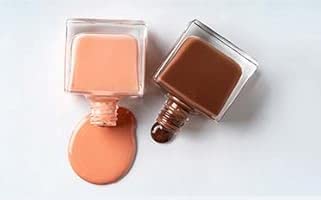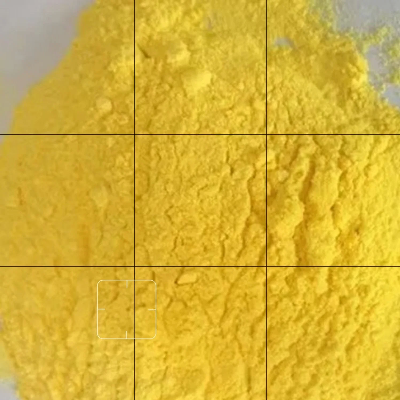1,Salinity.The degree of hydroxylation or alkalization of a
certain form in PAC (polyaluminum chloride) is called the degree of
basicity or alkalinity. It is generally expressed by the molar
ratio of aluminum hydroxide B=[OH]/[Al] percentage. The salinity is
one of the most important indicators of polyaluminum chloride,
which is closely related to the flocculation effect. The higher the
raw water concentration and the higher the salinity, the better the
flocculation effect. 2,pH value.The pH of the PAC
(polyaluminum chloride) solution is also an important indicator. It
represents the amount of OH- in the free state in solution. The pH
value of polyaluminum chloride generally increases with the
increase of the basicity, but for liquids with different
compositions, there is no corresponding relationship between the pH
value and the basicity. Liquids with the same salinity
concentration have different pH values when the concentration is
different. 3,alumina content.The alumina content in PAC
(polyaluminum chloride) is a measure of the effective components of
the product, which has a certain relationship with the relative
density of the solution. Generally speaking, the greater the
relative density, the higher the alumina content. The viscosity of
polyaluminum chloride is related to the alumina content, and the
viscosity increases with the increase of alumina content. Physical
data 1. Properties: Colorless or yellow solid. Its solution is
colorless or yellow-brown transparent liquid. 2. Solubility: easily
soluble in water and dilute alcohol, insoluble in anhydrous alcohol
and glycerin 1. It should be stored in a cool, ventilated,
dry and clean warehouse. During transportation, it should be
protected from rain and scorching sun, and deliquescence should be
prevented. 2. Be careful when loading and unloading to prevent
damage to the package. The storage period of liquid products is
half a year, and the storage period of solid products is one year.
1. Boiling pyrolysis method The crystalline aluminum chloride is
subjected to boiling pyrolysis at 170°C, and the released hydrogen
chloride is absorbed into 20% recovered. Then add water at above
60°C to carry out ripening polymerization, and then solidify, dry
and crush to obtain solid polyaluminum chloride finished product.
2. Aluminum ash method Add aluminum ash (the main components are
aluminum oxide and metal aluminum) in a certain proportion into the
reactor pre-added with washing water, slowly add under
stirring to carry out polycondensation reaction, and then mature
and polymerize to pH The value is 4.2 to 4.5, the relative density
of the solution is about 1.2, and the solution is settled to obtain
liquid polyaluminum chloride. The liquid product is diluted and
filtered, evaporated, concentrated and dried to obtain the solid
polyaluminum chloride product. The main purpose 1. Water treatment
agent is mainly used for the purification of drinking water,
industrial sewage and urban sewage, such as iron removal,al,
radioactive pollution removal, floating oil removal, etc. Also used
for industrial wastewater treatment, such as printing and dyeing
wastewater. Also used in precision casting, medicine, paper rubber,
leather, petroleum, chemicals, dyes. 2. Polyaluminum chloride is
used as a water treatment agent in surface treatment. 3. Cosmetic
raw materials. water purification principle The structure of the
micelle electric double layer determines that the concentration of
counter ions is the largest at the surface of the colloidal
particles. The larger the distance from the surface of the
colloidal particles, the lower the concentration of counter ions,
which is finally equal to the ion concentration in the solution.
When the electrolyte is added to the solution to increase the ion
concentration in the solution, the thickness of the diffusion layer
decreases. When two colloidal particles approach each other, the
zeta potential decreases due to the decrease in the thickness of
the diffusion layer, so the mutual repulsion force between them
decreases, that is, the repulsive force between the colloidal
particles with high ion concentration in the solution is smaller
than that with low ionic concentration. The suction force between
the colloidal particles is not affected by the composition of the
water phase, but due to the thinning of diffusion, the distance
between them when they collide is reduced, so that the mutual
suction force is larger. It can be seen that the resultant force of
repulsion and attraction has changed from repulsion-based to
suction-based (the repulsive potential energy has disappeared), and
the colloidal particles can be rapidly aggregated. This mechanism
can better explain the sedimentation phenomenon in the harbour.
When the fresh water enters the sea water, the salt increases, the
ion concentration increases, and the stability of the colloidal
particles carried by the fresh water decreases, so the clay and
other colloidal particles are ea
Related products about Drinking Water Grade Polyaluminum Chloride/PAC Water Purifier
-
 Waste Tyre Plastic Recycling Machinery Machine Tire Crusher Production Line Rubber Crumb Grinding Machine Equipment Tire Shredder
Waste Tyre Plastic Recycling Machinery Machine Tire Crusher Production Line Rubber Crumb Grinding Machine Equipment Tire Shredder
-
 Stretch Plastic Blowing Pet Bottle Making Blow Molding Machine Bottles Stretch Automatic Pet Bottle Blowing Machine
Stretch Plastic Blowing Pet Bottle Making Blow Molding Machine Bottles Stretch Automatic Pet Bottle Blowing Machine
-
 Waste Plastic Pet Bottle, Water Bottle Flake, PP/HDPE/LDPE PE Film Jumbo Woven Bags Plastic Crusher Machine, Plastic Crushing Washing Recycling Machine
Waste Plastic Pet Bottle, Water Bottle Flake, PP/HDPE/LDPE PE Film Jumbo Woven Bags Plastic Crusher Machine, Plastic Crushing Washing Recycling Machine
-
 Type 2 Wall-Mounted Electric Car Charging Station 7kw /11 Kwelectric Vehicle Charging Station Home Wallbox AC EV Charger Single Phase or 3three Phase
Type 2 Wall-Mounted Electric Car Charging Station 7kw /11 Kwelectric Vehicle Charging Station Home Wallbox AC EV Charger Single Phase or 3three Phase
-
 G-View G12W Wholesale Auto Car LED Headlight Bulb High Power H13 H11 9005 H7 H4 Car LED Headlights LED Car Lights
G-View G12W Wholesale Auto Car LED Headlight Bulb High Power H13 H11 9005 H7 H4 Car LED Headlights LED Car Lights
-
 New Design Porcelain Round Plates Dinner Set for Wedding and Banquet
New Design Porcelain Round Plates Dinner Set for Wedding and Banquet
-
 China 2023 New Design Super Soft 100% Polyester Microfiber Knitted Oversized Decoration Hoodie Blanket
China 2023 New Design Super Soft 100% Polyester Microfiber Knitted Oversized Decoration Hoodie Blanket
-
 Handmade Art Creative Materials Thickened White Paper Cup DIY Disposable Handmade Colored Paper Cup
Handmade Art Creative Materials Thickened White Paper Cup DIY Disposable Handmade Colored Paper Cup






